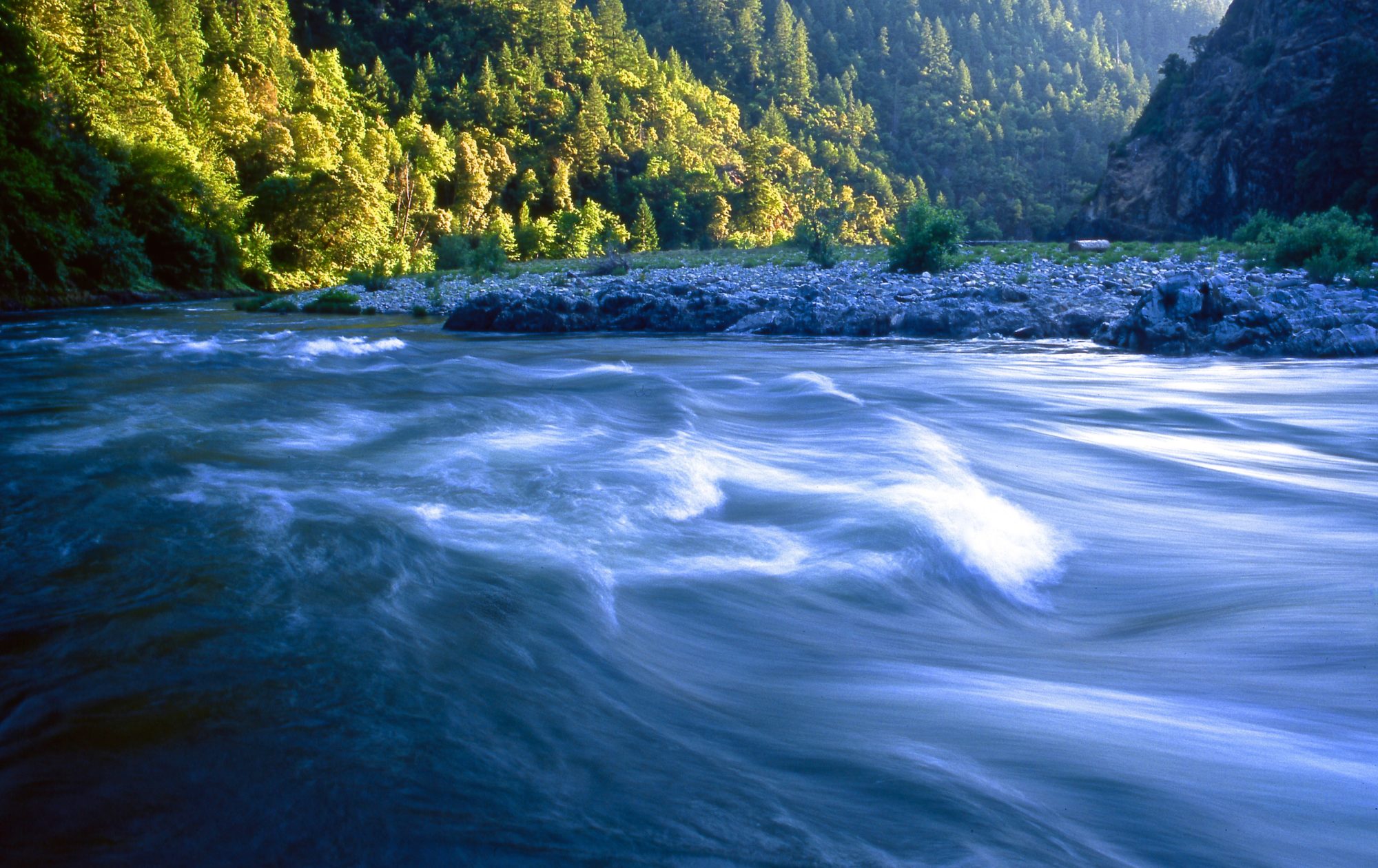Along the south coast of Oregon and northern California we have the largest concentration of National Wild and Scenic Rivers in America. These streams were especially designated by Congress for protection of their free-flowing and natural qualities, including fish, clean water, wildlife, scenery, and recreation.
Included in our Kalmiopsis Audubon-Curry County beat are the Elk, Rogue, Illinois, Chetco, and North Fork Smith. Of course, our other rivers are valuable as well, and at Kalmiopsis Audubon we regard them all as important.
Flowing from remote wilderness areas and through lush forests down to the Pacific Ocean, this superlative collection of rivers provides clear water and excellent habitat for salmon and steelhead. While wilderness reaches offer challenging outings for whitewater paddlers and backcountry hikers, lower reaches of the rivers are accessible favorites of anglers, boaters, campers, and swimmers.
Congress passed the National Wild & Scenic Rivers Act in 1968 to protect America’s best and most beloved rivers and to balance national policies that had vigorously promoted damming of rivers for development, hydropower, and irrigation. Eight rivers, including our Rogue, were designated with the initial legislation. Since then more than 200 have been added to the system: the Smith River in 1981, the Illinois in 1984, the Elk, Chetco, and North Fork Smith in 1988, and additional tributaries to the Rogue and Elk in 2019. Still, nationwide the Wild & Scenic River system includes fewer than 1/4 of 1 percent of America’s river miles.
Our rivers signify much of what is best about living on Oregon’s South Coast. Local residents depend on our streams for clean water, big fish, recreation, and inspiration, and the well-being of these waters depend on local people for proper stewardship and care.
We’re privileged to have these extraordinary waterways in our own backyard. One of Kalmiopsis Audubon’s core missions is to protect these streams as they are and to restore qualities that have been lost. Our National Wild & Scenic Rivers are a natural resource to cherish and sustain.
Elk River

This exquisite small river rushes from its rugged rainforest canyon to the ocean north of Port Orford. Thanks to wilderness protections, lots of occupied marbled murrelet habitat, and a strong local conservation ethic, the Elk has the most intact old-growth forest expanse on the Oregon Coast. A flight overhead shows virtually all the rest of the Coast Range as a patchwork of clear cuts while the Elk remains as an emerald refuge of native forest. As a result, the water here is among the cleanest on the West Coast, and salmon spawning habitat is excellent.
Rogue River

A classic wild river of the West, the Rogue is legendary for its wilderness float trips, its salmon and steelhead runs, and its hiking trail through remote terrain in one of the wildest Pacific-bound canyons. The river begins just north of Crater Lake and plunges through the Cascade Mountains before crossing all the way through the Coast Range and the Wild Rogue Wilderness in Curry County. The Rogue was among the first 8 National Wild and Scenic Rivers designated by Congress and has been a model for recreation and resource management ever since.
Illinois River

As the Rogue’s largest tributary, the Illinois is famous for challenging whitewater in springtime, pure flows, wilderness, and habitat of native salmon and steelhead. It rises in the Siskiyou Mountains and cuts through the Kalmiopsis Wilderness before meeting up with the Rogue near Agness. A dam once proposed for the Illinois, upstream of Agness at Buzzards’ Roost, was stopped by the Wild and Scenic River designation. Mining threats remain on upper tributaries.
Chetco River

The wildest river on the West Coast south of the Olympic Peninsula, the Chetco flows from the Kalmiopsis Wilderness to the ocean with no dams and little development until it nears Brookings. Crystal clear water is popular for swimming in summer while in winter the Chetco’s salmon and steelhead draw anglers from near and far.
North Fork Smith River

Upper reaches of this stream rise in the Kalmiopsis Wilderness and then flow across the state line to the main-stem Smith—the most pristine river remaining in all of California—that flows through majestic redwoods in Redwood State and National Parks.
Other special rivers we care about
A few of our other special rivers are the New River as it drifts northward along dunes from downstream Floras Lake to the Pacific, the Sixes River with notable salmon runs in a few unlogged tributary basins, Hunter Creek with its unusual native plant life and geology, the Pistol River flowing from coastal mountains and beautifully out to sea between Gold Beach and Brookings, and the Winchuck, which flows from Oregon’s redwood groves and meets the Pacific just north of California.






